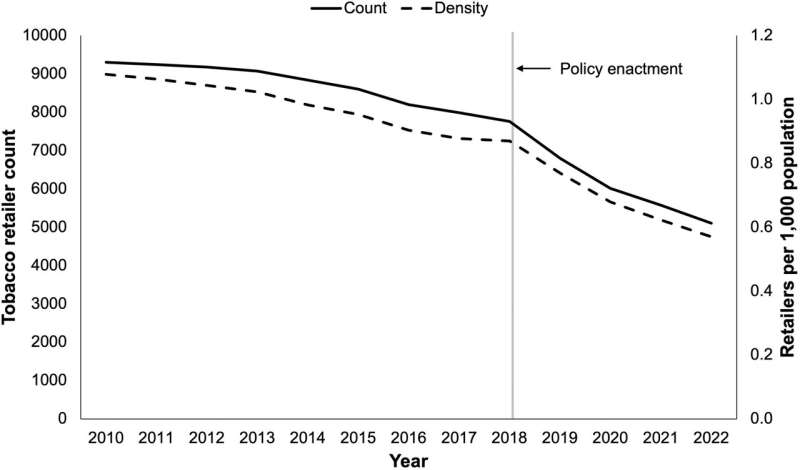This article has been reviewed according to Science X's editorial process and policies. Editors have highlighted the following attributes while ensuring the content's credibility:
fact-checked
peer-reviewed publication
trusted source
proofread
New York City's tobacco retailer density policy mitigates longstanding neighborhood inequities in tobacco access: Study

Tobacco retail licenses in New York City decreased by over 30 percent since 2018, when the City established a policy to cap the number of licenses in each of its 59 community districts, according to a study just released by Columbia University Mailman School of Public Health.
The results showed that policy effects were stronger in districts with lower income and greater proportions of non-Hispanic Black residents. This study is the first to evaluate the effects of New York City's innovative policy approach, which addresses a key environmental determinant of tobacco use disparities. Findings are published in the American Journal of Preventive Medicine.
Between 2010 and 2022, the number of tobacco retail licenses decreased by nearly half from 9,304 to 5,107. The rate of decline significantly accelerated from about 14 percent before the policy was enacted to over 30 percent after policy implementation in 2018. These findings are consistent with policy effects observed in Philadelphia, one of two other pioneering U.S. cities including San Francisco that enacted capping measures to reduce tobacco retail licenses.
"A greater number of tobacco retailers in communities is linked to a range of tobacco use behaviors, such as increased smoking initiation and lower quitting rates," said Daniel Giovenco, Ph.D., assistant professor of sociomedical sciences at Columbia Mailman School. "Our study provides strong evidence that New York City's policy substantially reduced the number of tobacco retail outlets and minimized longstanding neighborhood inequities in tobacco retailer density, which could help address persistent tobacco use disparities."
The researchers used historical tobacco retail licensing data from 2010 to 2022 and spatial modeling techniques to measure the policy's impact on retailer density levels across neighborhoods.
Similar to studies in other U.S. settings, low-income neighborhoods and neighborhoods with greater proportions of Black residents had disproportionately high levels of tobacco retailer density at baseline. By 2022, these differences were virtually eliminated in New York City, resulting in more balanced levels of tobacco retail exposure across the city.
Giovenco argues that "New York City's policy serves as a rare example of a tobacco control policy that may effectively reduce tobacco-related disparities. This approach to restructure tobacco retail in communities may reach populations that are disproportionately and unjustly burdened by tobacco use and have not benefitted from traditional tobacco control policies."
He suggests that this type of policy should be considered by other localities and supplemented with resources to support compliance and equitable enforcement.
More information: Daniel P. Giovenco et al, Impact and equity of New York City's tobacco retail reduction initiative, American Journal of Preventive Medicine (2023). DOI: 10.1016/j.amepre.2023.10.004




















